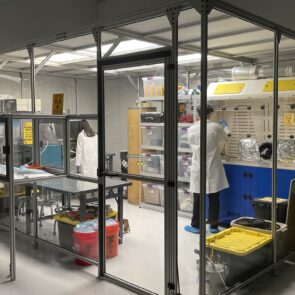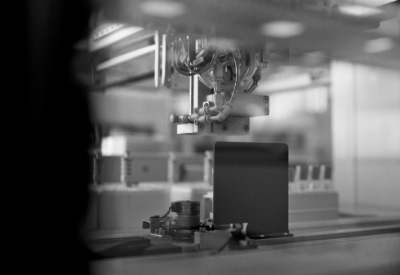Understanding Radiation Safety With City Labs’ NanoTritium™ Batteries
The word “radiation” often evokes concern and confusion. However, understanding the distinctions between ionizing and non-ionizing radiation is essential for appreciating its various applications, including the innovative use of tritium in City Labs’ NanoTritium™ batteries.
This blog explores these two types of radiation, details the specific radiation associated with tritium batteries, and explains why these batteries are safe.
Types of Radiation
Radiation refers to the energy emitted from atoms in the form of particles or electromagnetic waves. It is a natural phenomenon present in our environment, from natural sources like the sun to man-made sources such as medical treatments and energy generation.
Radiation falls into two main categories:
1. Ionizing Radiation
Ionizing radiation carries enough energy to remove tightly bound electrons from atoms, creating ions. Ionizing radiation can cause chemical changes in materials, including biological tissues, leading to potential damage such as DNA mutations and cancer. Common sources include X-rays, gamma rays, and certain radioactive materials.
2. Non-Ionizing Radiation
Non-ionizing radiation does not have enough energy to ionize atoms. It includes electromagnetic waves such as radio waves, microwaves, and visible light. Non-ionizing radiation is generally considered safer because it does not cause ionization and the associated cellular damage.
Ionizing Radiation and Its Impacts
Ionizing radiation is potent and requires stringent safety measures. It can penetrate biological tissues, leading to potential health risks like cancer. This type of radiation has various applications due to its high energy levels, including:
- Medical imaging and treatment. X-rays and CT scans rely on ionizing radiation to create detailed images of the inside of the body. Radiation therapy uses high doses to kill or damage cancer cells.
- Industrial applications. Ionizing radiation is used in non-destructive testing to inspect the integrity of materials and structures, such as pipelines and aircraft.
- Nuclear power generation. Ionizing radiation is a byproduct of nuclear reactions that generate electricity in nuclear power plants.
While ionizing radiation has significant benefits, its potential to cause harm requires strict safety protocols, including shielding, exposure limits, and monitoring to protect workers and the public from its adverse effects.
Non-Ionizing Radiation and Its Safety
Non-ionizing radiation, while lower in energy, is widespread in everyday technology. Common examples include:
- Radio waves. Used in communication devices such as radios, televisions, and mobile phones. They are essential for transmitting data over long distances without harming living tissues.
- Microwaves. Employed in cooking and certain communication technologies. Microwaves heat food by causing water molecules to vibrate, but they do not have enough energy to alter atomic structures.
- Infrared radiation. Found in remote controls and heat lamps. Infrared radiation is primarily associated with heat and is used in various heating applications.
- Visible light. The light we see every day is a form of non-ionizing radiation that allows us to perceive the world around us.
Non-ionizing radiation does not carry enough energy to ionize atoms or molecules and is generally not associated with the same health risks as ionizing radiation. It is used safely in a wide range of applications, contributing to advancements in communication, healthcare, and everyday technology without posing significant risks to human health.
NanoTritium™ Batteries and Radiation Safety
City Labs’ NanoTritium™ batteries utilize tritium, a radioactive isotope of hydrogen, to generate power through a process known as betavoltaic technology. Tritium (hydrogen-3) is a weak beta emitter, meaning it emits low-energy beta particles.
These beta particles have low penetration power; they are incapable of penetrating human skin or even a few millimeters of air. As a result, tritium’s beta particles pose minimal health risks when proper safety measures are followed because their low energy— which is easily contained with light shielding—does not cause significant ionization in human tissues.
Betavoltaic technology harnesses the energy of beta particles to generate electricity. In NanoTritium™ batteries, tritium undergoes beta decay, emitting beta particles. These particles then interact with semiconductor materials within the battery, generating a steady flow of electricity. This process allows the batteries to provide long-lasting, reliable power for a variety of applications while maintaining high safety standards.

City Labs’ Safety Measures and Environmental Impact
City Labs NanoTritium™ batteries adhere to rigorous safety standards throughout the design and manufacturing processes. The beta particles emitted by tritium are contained within the battery, safeguarding against radiation exposure to users.
Additionally, City Labs meets strict safety standards set by regulatory bodies such as the Nuclear Regulatory Commission (NRC) and the Florida Department of Health. These regulations ensure that all aspects of tritium production, handling, use, and disposal are managed safely, thereby minimizing potential risks.
The environmental impact of NanoTritium™ batteries is also carefully managed. Tritium’s relatively short half-life of 12.3 years means that its radioactivity diminishes quickly, reducing long-term environmental impact. City Labs follows proper disposal measures to ensure that used and end-of-life batteries are handled in accordance with environmental safety standards, further contributing to the eco-friendly profile of NanoTritium™ batteries.
Safe and Reliable Power for the Future
Understanding how ionizing and non-ionizing radiation differ helps demystify the safety of technologies like NanoTritium™ batteries. City Labs’ innovative use of tritium provides a safe and reliable power source for a range of applications, from aerospace to medical devices.
City Labs is dedicated to advancing sustainable energy solutions through safe and innovative technologies. We welcome collaboration opportunities and invite anyone interested in exploring partnerships to contact us for more information.










